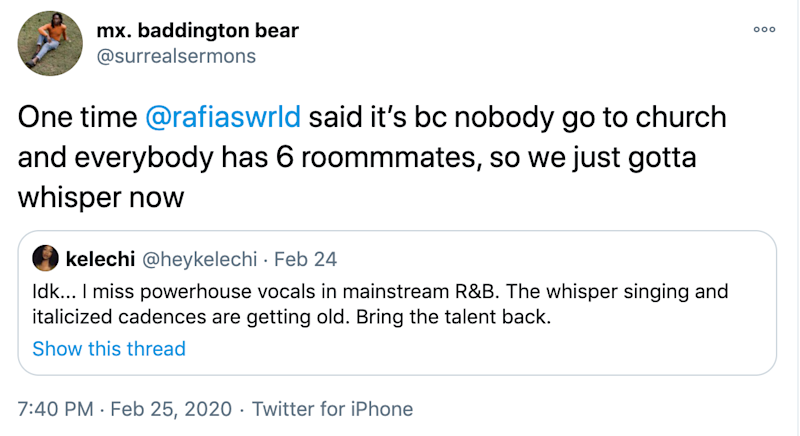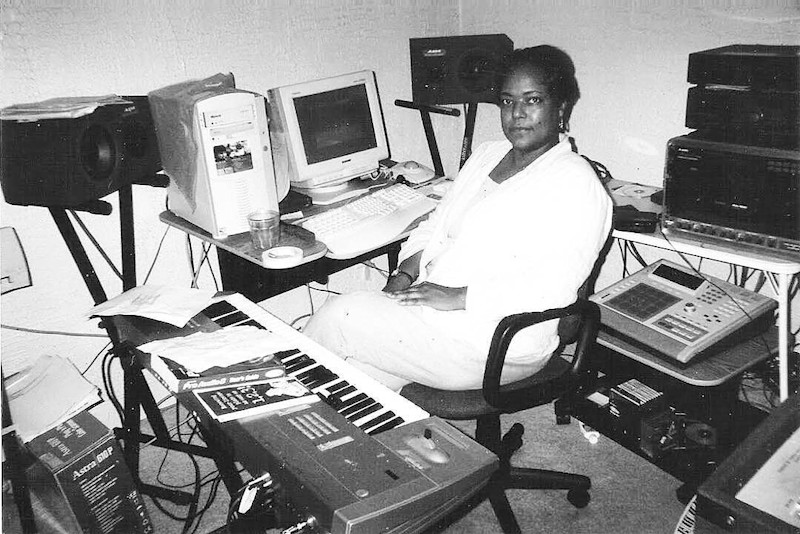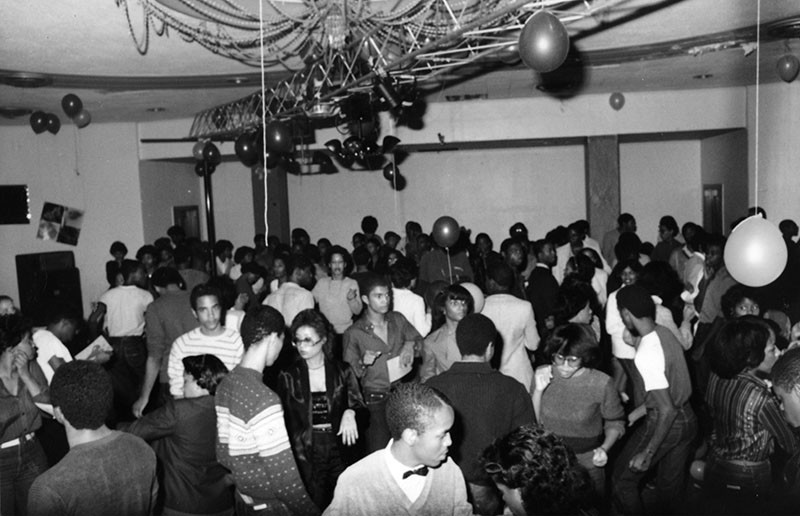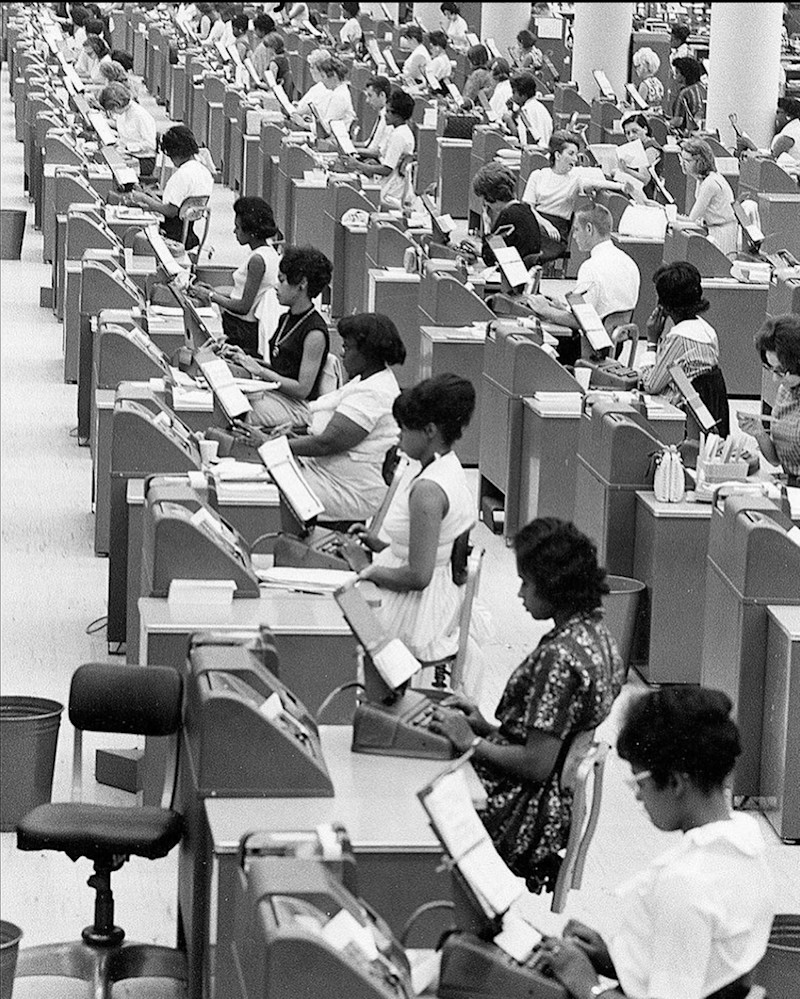Essay
Southern Electronics and Grassroots Technologies
12/22/2020
R.C. Clarke
This piece appears in the Are.na Annual 2021, themed “tend.”
I often think about a tweet that a friend wrote lamenting the loss of soul music’s powerhouse vocals from decades past: “ …it’s bc nobody go to church and everybody has 6 roommates, so we just gotta whisper now.”

On its surface, it’s a perfect encapsulation of the new stream of postmodern soul that has all but branded this mood-vibe-kickback generation of Black music. But on a deeper level, it also speaks to a ruthless stripping away of space and of culture. In the past, the Black diaspora created our own space for song in churches and public squares, and even further back, Black folk created transcendence in the cotton field. Space gives form: Blues notes reverberate off of church walls and gospel shines through stained glass; jazz swells to fill New Orleans nightclubs and Detroit techno echoes the post-industrial landscape of the abandoned warehouses it was made in. When Black people are pushed out of their own spaces by capitalist interests and a ruthless co-opting of Black culture, we find new spaces, migrating and inventing as we go, working with what we have, and pushing culture forward. Black people are the dependent variable in the progression of civilization, not a function of it.
That migration has moved from the ground to the wires, with computers and now the Internet giving space for creation, invention, and progression. Today, tended spaces on the Internet allow for both the imaginative and the material necessary for the creation of Black art and music.
In the late 1870s, rural geographies in the Antebellum American South granted free Black people the latitude towards greater expression, away from the coded communications used in enslavement, such as mapping escape routes in braided hair or singing “Go Down, Moses” when an Underground Railroad conductor was nearby. Away from the plantation, Blacks began to form communities around churches, spaces that played host for a cacophony of sound, thought, and manifestation previously prohibited. From inside churches came what’s known colloquially as “blue notes,” or the inclusion of the third, fifth, and seventh intervals—where a minor interval is used when a major is expected. These notes laid the foundation of what’s been considered “soul.”
From rural churches, we expanded into cities, which gave space for Black creatives to invent sounds yet unheard. This was particularly true in New Orleans, where slaves were allowed to convene and dance to various percussion and hand-me-down brass instruments every Sunday in Congo Square, giving way to a kind of proto-jazz movement. Later on in the Treme, jazz proper was crafted by brass players in clubs late at night, riffing alongside sex workers and dancers. From there, Black music propagated upriver alongside coastlines, and into northern industrial cities. Gospel, RnB, Soul, and Funk, gave way to Disco, House, Techno, Bounce, and Garage. As much devotion as we lend towards these genres, we must also give respect for the spaces they inhabit.

Black ownership of the Church had allowed for true exaltation—one without worries of being too loud, or that a landlord would peek in their head. But by 1999 in New Orleans, a federal judge had proposed a state law placing churches and schools in quiet zones, effectively banning music in and around these spaces. Implementing a noise ordinance in the city of noise, in the direct spaces of said noise, is a special kind of ironic cruelty, and one that shows a tendency from Black-run spaces to be co-opted or destroyed.
In the same year but across the country, the city of Detroit was also biting the hand that fed it with the permanent closure of The Packard, the auto plant turned legendary techno venue. In the ’80s and ’90s, Detroit suburbia had found its new churches in industrial graveyards, former warehouses that were converted into multi-thousand person capacity techno sovereignties where DJs could bounce energies off of each other for hours without worry, and raves lasted for days at a time. These warehouses were petri dishes for cultivating the experimental sciences and sounds of Detroit techno, which intersected the anxieties of the industrial working class with the dreams of a future where the oppressed are no longer just a cog in a machine, but instead techno-rebels dismantling deadly pressures on Black communities.
Taking cues from Funkadelic, Kraftwerk, and their own gutted industrial community, techno solidified a worthwhile future for the Black Diaspora in both form and function. Legendary artists thrived in the Detroit techno scene because they had their own space to create and to feel safe. Yet just like the rural churches before them, these spaces were also taken away and repurposed for capitalistic interests. Most of these areas are now alternative tour sites where LLC’s wax poetic about the power these sites once had as sub-cultural artifacts.

While Detroit techno did a lot to make electronic music more accessible, Laurie Spiegel was already speaking of the potentialities of computers to be a “grassroots, almost a folk medium,” as far back in the 1970s, crafting a counter-narrative to the idea that electronics were “inaccessible tools of large bureaucratic systems.” In a non-linear perversion of multiple discovery, artists like DJ Kool Herc, King Tubby, Buddy Bolden, and Juan Atkins reconstituted previously-considered bourgeois instruments for the working class. Turntablism in the ’80s, modern recording equipment, and sound system technologies have all advanced thanks mostly to the fervor and demand of Black people—products such as the direct drive Technic’s turntables, Pioneer CDJ’s, and Roland drum machines have no reason to exist at the scale they currently are without Black folk both buying them and improving on them. Technology has been most in dialog with Black people across time, because we used to be a form of technology ourselves, brought to America through the Middle Passage to update and upscale American agrarian output.

Created inside the halls of MIT, but finding its purpose with the layman, the Internet seems to be the last battleground on which to fight for our radical nurturing of proletariat technologies. The Internet allows for knowledge, culture, and care to spread further than any leaflet or radio wave that came before. Within small online communities, we’ve built back our (cyber) churches. Yet at the same time, the Internet is being rapidly colonized by corporations, with large social platforms compressing online communities onto a more flattened landscape, algorithms determining our music taste, and music streaming platforms exploiting artists. When there’s nowhere left to move on to, how will we hold on to our space?

A selective chronologist, R.C. Clarke notices the passage of time through both an ethnomusicological lens as a co-editor at Dweller Electronics and oceanographically as a Ph.D student in Coastal Geological Sciences in New Orleans, Louisiana.
Are.na Blog
Learn about how people use Are.na to do work and pursue personal projects through case studies, interviews, and highlights.
See MoreYou can also get our blog posts via email